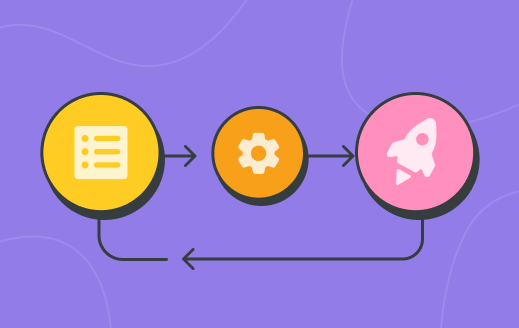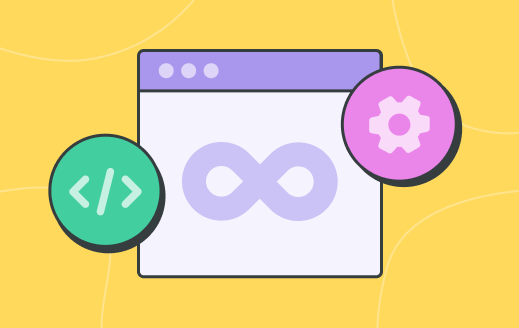What is continuous delivery? And how can it help you?
Georgina Guthrie
August 22, 2025
As anyone who’s ever glared at an ‘installing updates’ screen will tell you, waiting for software to sort itself out is a pain. Long delays, buggy releases, and clunky rollouts irk users and developers alike — which is why the benefits of continuous delivery have become so widely embraced across the industry.
In the past, developers would work in isolation for weeks or even months before merging their changes into the main codebase. This made deployments slow, error-prone, and hard to manage, not to mention result in a nail-biting ‘ta dah’ moment where things may or may not go to plan.
Continuous delivery emerged as a solution, allowing teams to release updates faster and more frequently. It’s now the standard approach for modern app development. Here’s the lowdown.
What is continuous delivery (CD)?
Continuous delivery (also known as CD) expands upon continuous integration by deploying all code changes to a testing environment immediately after the build stage. Once the build has passed the test, designers have a deployment-ready item that has passed through a standardized test process.
Continuous delivery allows developers to test multiple aspects – from API reliability to load testing to UI. It enables developers to preemptively spot issues and validate their choices. This boosts developer confidence and speeds up the time it takes to have a usable build ready.
What is continuous integration (CI)?
Continuous integration is the practice of merging code changes into a central repository. Once that’s done, the team can run automated builds and tests at the click of a button. This helps developers find bugs faster. It also improves quality and shortens the amount of time between new releases.
What is the CI/CD pipeline?
The CI/CD pipeline is an automated workflow that brings together continuous integration and continuous delivery. The entire process helps teams take code from idea to release without the long waits or last-minute scrambles.
Here’s a simplified view of how it works:
- Developers commit code to a shared repository.
- Automated tests run to catch bugs or broken builds (CI in action).
- Successful builds get deployed to a staging environment for more tests.
- When everything looks good, the code is either manually pushed to production (continuous delivery) or automatically released (continuous deployment).
What’s the difference between continuous delivery and continuous deployment?
The acronyms are the same (CD x2), but there’s a subtle difference. With continuous deployment, software is produced in short cycles through automated deployments. With continuous delivery, the deployments are manual.
|
Continuous delivery |
Continuous deployment |
|
|
Release process |
Requires manual approval before going live |
Fully automated release to production |
|
Automation level |
Automated up to the release step |
Fully automated from build to production |
|
Control |
Teams choose when to deploy |
Every successful change is deployed automatically |
|
Risk |
Lower risk through smaller, frequent releases |
Even lower risk due to immediate feedback and fast rollback |
|
Team workload |
Reduces pressure with predictable, scheduled releases |
Removes the need for scheduled release days entirely |
|
Use case |
Ideal when manual review or sign-off is needed |
Best for mature pipelines with strong automated testing |
What are the benefits of continuous delivery?
Cast your mind back to the last time your team pushed out a product update. Was it smooth sailing, or did everyone brace themselves for bugs and a long night ahead? Traditional release cycles tend to build up pressure — big batches of changes rolled out all at once, with plenty of room for nasty surprises.
Continuous delivery takes the edge off. By shipping smaller updates more often, teams can catch problems earlier and avoid the stress of last-minute surprises. It’s a more reliable, less chaotic way to move fast — and it helps build confidence across the board.
TL;DR: What teams gain from continuous delivery
- Normalize change: Frequent releases make change feel routine, not disruptive.
- Free up focus: Automation reduces grunt work so teams can tackle higher-value tasks.
- Reduce stress: CD replaces chaotic big-bang launches with a steady, stable rhythm.
- Speed up feedback: Smaller releases mean faster user input and smarter decisions.
- Boost collaboration: Shared pipelines align teams and encourage joint ownership.
- Learn faster: Every release offers insights to refine product and process.
Continuous delivery principles and practices you need to know
There are eight fundamental principles to continuous delivery. The more your team can do the following, the tighter your workflow.
1. Automate everything
Speed things up by automating as much as possible (while still retaining control over the release).
Automation gives dev teams and managers more time to spend on more creative tasks, like designing and finding new ways of solving customer problems. Letting computers take over also increases reliability. To err is to human, after all.
2. Make sure you have version control
Version control is a vital and essential part of CD. Why? Because you need to make sure you can keep adding versions without impacting existing features.
Version or source control backs up your SQL code and allows for continuous development and integration, which is a crucial component of continuous delivery. As well as keeping everyone on the same page, it should also allow an undo functionality that lets teams retrace their steps.
3. Test regularly and often
In the spirit of Agile, keep your releases small, regular, and test, test, test. Automate this as much as possible to avoid time-sucking bottlenecks between development, QA, and customer feedback.
If you’re not used to releasing something that’s anything less than flawless, then this can be a tricky mindset to adopt. But you know what they say — practice makes perfect. The more you do it, and the more you see the benefits, the easier it’ll be!
4. Set up a review process
It’s easier to submit your work if you know there’s a safety net — i.e., someone else to check it before it goes to the customer. Many businesses use a hierarchical system for code review, which means junior developers have their work checked over by more experienced members of the team before it goes live.
Reviews and mentorship don’t have to be strictly internal. Tools like Codementor for Teams can connect your junior team members with experienced mentors across all tech stacks for expert programming help and inspiration.
5. Keep the end-user in mind
Teams need to focus on the end-users at all times. Listen to feedback, and remember that if only the developers can use it, then there’s not much point in it existing.
The same goes for quality: try not to think of your product as something that just has to pass QA checks. Quality should be worked into every release. New features should be subject to automated tests to make sure code is bug-free, and planning for new features should include automated testing and performance monitoring.
6. Build a culture of continuous improvement
The feedback loop is an essential part of continuous delivery — and just because a product’s been delivered to the customer, it doesn’t mean your continuous improvement cycle is over.
Utilize tools that measure performance, revenue, engagement, and other metrics that can indicate how successful your product is. You can then track this information on the cloud, and use it to guide future iterations.
7. Make collaboration a way of life
It’s best when teams see their input as part of a larger picture — and they understand that just because their specific job is ‘done,’ it doesn’t mean their work is over.
Everyone should focus on making sure the product meets the end user’s needs. Developers should plan for production releases, QA teams should apply the same effort to every single release as they would do a final finished product, and project managers should plan work with quality in mind.
How to learn from your own pipeline
Every build, test, and release leaves a trail of clues. You want to improve how your team ships software? Your delivery pipeline is already full of useful signals — you just have to start listening.
If things break, that’s not always bad — it’s feedback. But where things break matters. Failures during unit tests might point to fragile code. Failures in staging might reveal missing test cases. And if production is your alert system, something’s off upstream. Knowing where issues tend to cluster helps you fix the right things first.
Metrics that actually matter
You don’t need a dashboard full of dials. Start with a few questions:
- How long does it take for a single change to go live?
- How often do we catch issues before they reach users?
- What’s slowing us down most — testing, approvals, or something else?
- Are we fixing the same kinds of problems repeatedly?
What can get in the way of CD success (and how to fix it)
Continuous delivery sounds great on paper — and it is. But getting there can be messy. It often means untangling habits, rethinking priorities, and getting comfortable with a new way of working. If your team’s hitting bumps in the road, you’re not alone.
1. “We’ve never done it this way before”
Change takes buy-in, and not everyone’s immediately on board. People may feel uneasy handing off jobs to automation, or worry that faster releases mean cutting corners. To get past this, bring your team into the process early. Show how CD actually reduces risk. Share wins. Build trust slowly — but steadily. A change management plan can help you here.
2. “We’ll do it when we have time”
Pipelines and tooling often end up at the bottom of the backlog. But without them, that backlog will only grow. Instead of trying to carve out a full quarter to ‘implement CD’, try weaving improvements into existing work: automating one test here, improving a deploy script there. Small steps still count.
3. “We don’t have the right setup”
Maybe your test environment is flaky. Maybe your infrastructure is aging. Maybe your process is held together with duct tape and good intentions. That’s okay. Start by mapping out the biggest friction points. What’s painful? What’s repetitive? What breaks the most? Use those answers to guide your first improvements — and build from there.
Why CD success starts with teamwork
When it comes to staying nimble, having the right tools is also half the battle. Enter: Project management software. Beyond helping managers and developers track their progress, teams can access Kanban boards and progress charts to see where their work fits into the bigger plan. This means everyone has a more joined-up view of things, plus the latest information at their fingertips.
Essentially, continuous delivery is all about collaboration, speed, and improvement — and the more tools you can use to help you achieve these three things, the faster and more efficient your project will be.
Want to learn more about the full software development lifecycle? Make sure to check out our DevOps Guide.
This post was originally published on June 3, 2020, and updated most recently on August 22, 2025.


